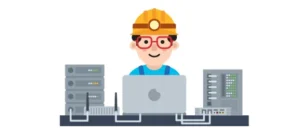Best Home Mining Devices 2025
Discover profitable cryptocurrency mining equipment perfect for home use. Compare prices, profitability, and find the best deals from trusted retailers.
Why Start Home Mining?
Home mining means creating cryptocurrencies at home with your own devices, like small ASIC miners or graphics cards. It is different from big mining farms because you don’t need huge spaces or large amounts of money to start. With home mining, people can join the blockchain network and earn coins while using their personal equipment.
This way of mining has become more popular recently, as new devices are smaller, easier to set up, and more energy-efficient. People like home mining not only because it lets them earn coins, but also because it gives them a chance to be part of new blockchain projects from the beginning. With the rise of decentralized networks and community-driven systems, home mining is now seen as both an exciting hobby and a way to join the future of digital finance from the comfort of your own home.
Generate cryptocurrency 24/7 with minimal maintenance required
Home-Friendly
Compact devices designed for residential use with noise reduction
Latest generation miners with optimized power consumption
Complete Home Mining Setup Guide
Our comprehensive guides cover everything from device selection to optimization.
Whether you’re a beginner or experienced miner, we provide step-by-step instructions for:
- Choosing the right mining device for your space
- Setting up proper ventilation and cooling
- Configuring mining software and pools
- Optimizing electricity costs and profitability
- Maintenance and troubleshooting tips

Latest Articles
Reviews
Guides
- Home Mining Guides #2025
- List Item #1
- List Item #1
- List Item #1
- Home Mining Guides #2025
- List Item #1
- List Item #1
- List Item #1
Shop by Mining Category
Bitcoin Miners
SHA-256 ASIC miners for Bitcoin and Bitcoin Cash mining
Ethereum Miners
GPU mining rigs optimized for Ethereum and altcoins
Multi-Algorithm
Versatile miners supporting multiple cryptocurrencies
Explore our comprehensive selection of cryptocurrency mining devices organized by specific mining categories to help you find the perfect equipment for your needs. Whether you’re interested in Bitcoin ASIC miners for maximum hash rates, multi-algorithm devices for diversified mining portfolios, or silent miners designed specifically for home environments, we’ve curated the best options in each category.
Our mining device categories are carefully selected based on profitability analysis, power efficiency ratings, and real-world performance data from mining communities worldwide. Browse through each category to compare specifications, read detailed reviews, and discover exclusive deals on the most popular home mining equipment available today.
Device Comparison
| Device | Hash Rate | Power Usage | Noise Level | Best For |
|---|---|---|---|---|
| Bitaxe Ultra (BM1366) | 425–550 GH/s | ≈11 W | Low | Open-source SHA-256 solo “lottery” |
| Bitaxe Max (BM1397) | 250–450 GH/s | ≈12 W | Low | Open-source starter SHA-256 |
| NerdAxe (BM1366) | ≈500 GH/s | ≈12 W | Low | Open-source SHA-256 starter |
| Bitaxe Supra (BM1368) | 625–775 GH/s | ≈15 W | Low | Open-source SHA-256 (efficiency) |
| Bitaxe Gamma 602 (BM1370) | ≈1.2 TH/s | ≈18 W | Low | Open-source SHA-256 (quiet, 24/7) |
| NerdQaxe+ (4× BM1368) | ≈2.5 TH/s | 50–55 W | ≤25 dB (quiet mode) | Open-source SHA-256 (home) |
| Bitaxe Hex / UltraHex (6× BM1366) | ≈3.0–3.3 TH/s | ≈57–65 W | Low | Open-source SHA-256 (multi-chip) |
| NerdQaxe+ Hydro (4× BM1368) | ≈2.5 TH/s | ≈60 W | Low | Open-source SHA-256 (water-cooled) |
| NerdQaxe++ (BM1370) | ≈4.8 TH/s | ≈72–76 W | ≈40 dB | Open-source SHA-256 (multi-chip, higher hash) |
| Bitaxe Supra Hex 701 (6× BM1368) | ≈3.5–4.2 TH/s | ≈90 W | ≈35 dB | Open-source SHA-256 (high hash, low W) |
| Bitaxe Supra Hex 702 (6× BM1368) | ≈3.5–4.2 TH/s | ≈90 W | ≈35 dB | Open-source SHA-256 (high hash, low W) |
| IceRiver KS0 Ultra | 400 GH/s | 100 W | Low | Kaspa kHeavyHash (starter) |
| IceRiver KS0 Pro | 200 GH/s | 100 W | Low | Kaspa ultra-low power |
| Canaan Avalon Nano 3S | ≈6 TH/s | ≈140 W | 33–40 dB | USB/desktop SHA-256 mini-heater |
| FutureBit Apollo BTC II | 6–10 TH/s | 175–375 W | ≤40 dB (Eco) | Quiet SHA-256 desktop (BTC; node optional) |
| iPollo V1 Mini SE Plus | ≈400 MH/s | 232–240 W | ≈45 dB | Quiet ETC (compact) |
| Goldshell KD-Box II | 5 TH/s (3.5 TH/s LP) | 400 W (260 W LP) | ≤35 dB | Kadena low-noise box |
| Goldshell Mini-DOGE III | ≈700 MH/s | ≈400 W | ≈35 dB | Quiet Scrypt (DOGE/LTC) dual-mining |
| Goldshell CK-Box II | ≈2.1 TH/s | ≈400 W | ≤35 dB | Nervos CKB (Eaglesong) |
| Goldshell HS-Box II | ≈1.2 TH/s (HNS) | ≈400 W | ≤35 dB | Handshake (HNS) quiet box |
| Goldshell SC-Box II | ≈1.9 TH/s | ≈400 W | ≤35 dB | Siacoin (Blake2b) |
| Heatbit Trio | ≈8.5–10 TH/s | ≈400 W (up to 1400 W heating boost) | Home appliance level | SHA-256 heater-miner (air purifier) |
| Jasminer X4-Q | ≈1.04 GH/s | ≈480 W | ≈40 dB | Quiet ETC (budget) |
| Goldshell AL Box III | ≈1.25 TH/s | ≈600 W | ≤35 dB | Alephium home box |
| Jasminer X16-Q Pro | ≈2.05 GH/s | ≈520 W | ≈40 dB | High-efficiency quiet ETC |
| Jasminer X16-Q | ≈1.95 GH/s | ≈620 W | ≈40 dB | Quiet ETC (value) |
| Heatbit (Original Heater) | ≈14 TH/s | ≈1400 W | Home heater | Legacy SHA-256 heater-miner |
FAQs
What's the best mining device for beginners?
For beginners, we recommend starting with plug-and-play ASIC miners like the Antminer series, which offer good profitability with minimal setup complexity.
Do I need special electrical setup?
Most home miners require 220V outlets and sufficient amperage. Consult an electrician for proper installation and safety.
Can I mine quietly at home?
Yes! Look for miners with sound dampening features or consider immersion cooling setups for nearly silent operation.
How much electricity do mining devices use?
Modern mining devices typically consume 2000-4000W of power. Check your local electricity rates to calculate operating costs accurately.
What's the typical ROI timeframe?
ROI varies based on device cost, electricity rates, and market conditions. Typically ranges from 8-18 months for efficient setups.
Which cryptocurrencies are most profitable?
Bitcoin remains popular for ASIC mining, while GPU mining focuses on Ethereum alternatives. Profitability changes with market conditions.
